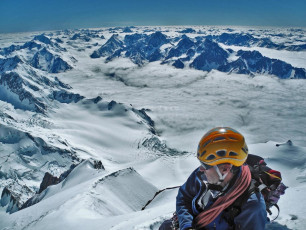
Ever since the weather deprived me of a chance to climb guided on Mount Cook back in 2001 there was a little empty space in my psyche. I understand that climbing this mountain is a privilege, not a right. Having come so close, yet not ever actually having a go though; it was under my skin. Initially I consoled myself that I’d return, hopefully independently, after building my skills on lesser peaks. But the years and lesser peaks rolled by.
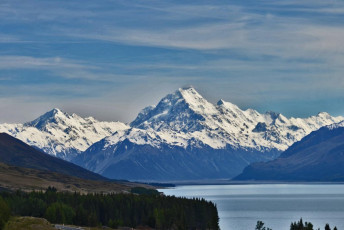
I continued to visit Mount Cook National Park, sometimes bringing my family, making various excursions. The most serious attempt at a real climb was in summer 2004, up the Hopkins Valley in pursuit of Mount Ward, but the weather put paid to that. There were also walks to the terminal moraines of the Hooker and Tasman Glaciers; a scramble up Wakefield ridge; a couple of romps up Mount Sebastopol (1,468m); Mueller Hut and Mount Ollivier (1,933m) on the ridge above. I was even paid on one occasion to guide two Canadian media people, hosted by Education New Zealand, up to Mueller Hut. That was a nice insight into what it is to be on the other side of a guide / client relationship.
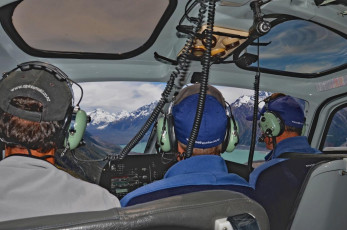
Every time I visited, or drove or flew past the Park Aoraki taunted me. Then, all of a sudden I was turning fifty. It dawned on me that, if I didn’t have another crack soon, I may never do so. My recent hip replacement was another wakeup call.
To start with I sought Steve, my usual climbing buddy, to partner with. As the warmer weather came on though, his landscaping business prevented him from getting away. Once again, guiding became my only realistic option.
As I studied the weather forecasts during October and into November, my challenge was to find a guide who could give me some flexibility around the unsettled weather. I didn’t want to lock myself into a set climbing week, only to see my guide fee dissolve in the rain like last time. After many emails and phone calls I eventually made contact with Gary, lead guide and owner of Alpinism and Ski. By now Christmas was looming so it came down to the crunch – time to put my money where my mouth was and commit. We agreed on the second week in December and Gary gave me a couple of days leeway which, while still no guarantee, certainly improved my chances of getting some climbing in over the period we committed to.
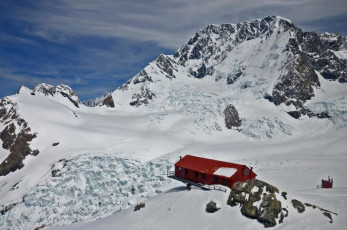
As it turned out, we enjoyed improving weather from the beginning. By early afternoon on our first day into the schedule, via an exhilarating chopper ride, we reached Plateau Hut at 2,200 metres.
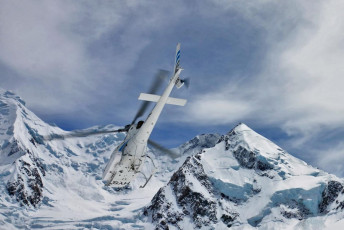
Confirmation that the hard work was next.
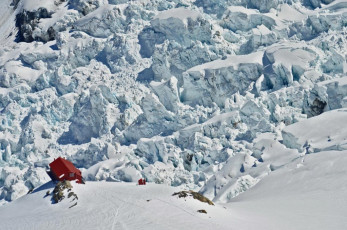
Plateau Hut (2,200m) and the upper section of the Hochstetter Icefall.
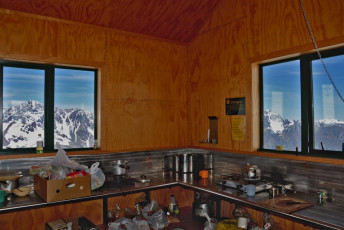
Room with a view.
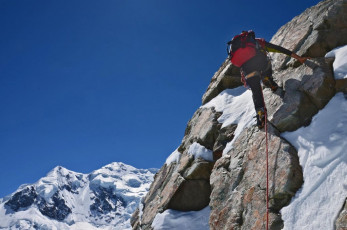
That afternoon we roped up for a short snow plug up on to the Dome, 200 or so metres above the Hut, so Gary could get some idea about what my capabilities were.
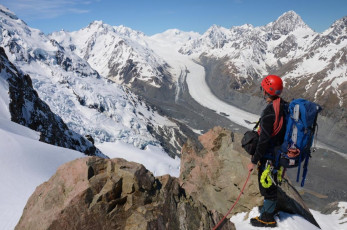
The route we took was easy, but my jaw dangled for most of the way simply due to what I could see in every direction.
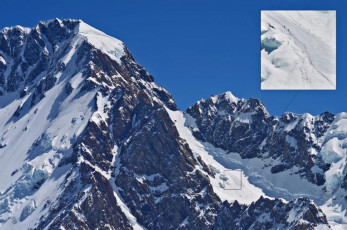
The Grand Plateau was every bit as spectacular as anything I’d seen in the Himalaya. Just being there had me repeatedly bubbling up with little waves of joy.
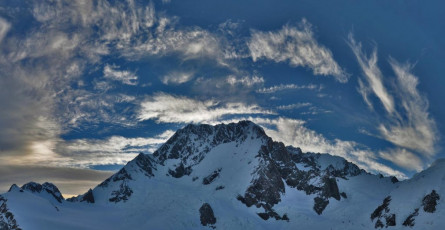
There was still changeable weather about though, which made for luxuriant sunsets and sun rises.
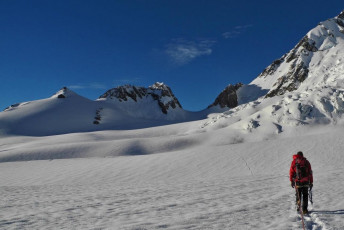
Day two saw us trudging across the Grand Plateau, considerably larger than it looked, to the Anzac Peaks for another warm up.
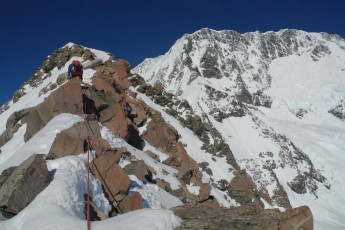
Every vantage point on the Plateau is dominated by Aoraki, but close at hand are most of the other New Zealand three thousanders too.
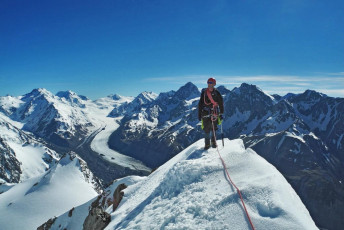
Mount Tasman, number two in the pecking order, visually lived up to its reputation as the finest ice climb in the country. Dampier, Vancouver, Malaspina, Teichelmann, Graham, Silberhorn, Dixon, Lendenfeld, Haast, Hardinger, Glacier Peak, the Minarets, Ellie De Beaumont, Malte Brun, Hamilton. So many big peaks, comprising a whole that’s very hard to do justice, in words or images.
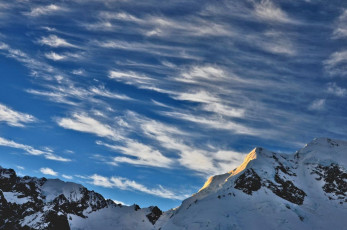
I soaked it all up, but always in my mind was the big question – when would we climb? Gary picked the Wednesday as the most likely weather window but, at midnight on Monday I woke and looked outside. The sky was spray painted in stars and the wind had dropped. “Gary, what do you reckon?” A few moments later he came back into the bunk room. “Yeah, let’s go.” YES!
Out on the snow by the hut, all geared up and about ready to set out, I realised my helmet wasn’t on my head but hanging on the hook where I left it the evening before. Doahhh. My crampons clanked on the metal floor grates as Gary belayed me back into the hut on my retrieval mission.
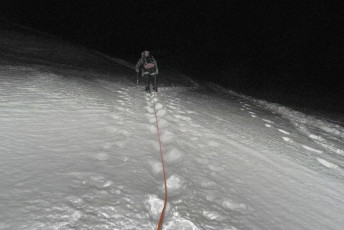
At last, two am and we set off. It was surprisingly mild. Comfortably cool, but not much of a freeze, so we anticipated a fairly slushy descent later. Back across the Plateau, Gary led up through the crevasses of the Linda Glacier. In the dark I was trying to imagine what they looked like.
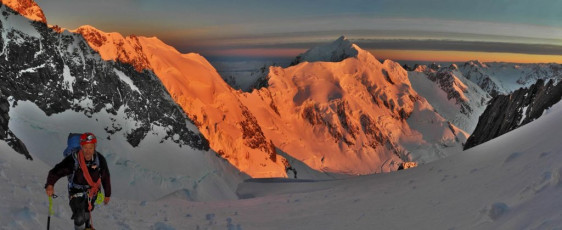
Our worlds were restricted to the reach of our headlamps all the way up, past the infamous Gun Barrel and on to the Linda Shelf. There, a glorious sunrise painted everything crimson, then orange, yellow and finally brilliant white. I felt like Jekyll probably did at the point he was about to change to Hyde; the photographic possibilities were so tantalising, yet we had to keep moving. Gary relented for a few shots before we headed out across the Shelf.
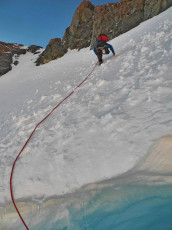
Crossing the Linda shelf.
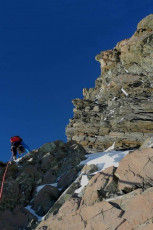
Soon we were across and heading up to the base of the summit rocks at about 3,300 metres. My pulse quickened here, not just because the air was beginning to thin. I knew this section of the climb might test me the most.
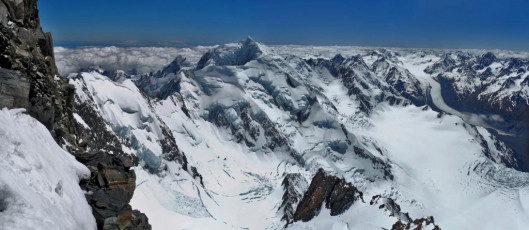
The view north along the main divide from the summit rocks.
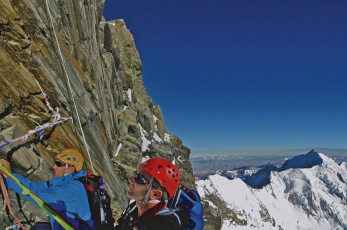
We clipped into a sturdy fixed wire cable and I tried to see where to next. Everywhere were what appeared to be sheer cliffs. Gary methodically worked on the rope, setting up the belay. Then off he went, out to the right, up an exposed crack system. He disappeared upward and the rope played out. Soon I got the signal to follow.
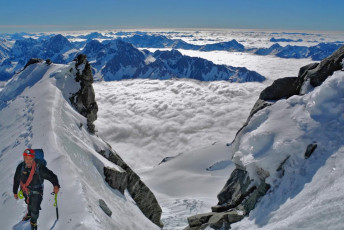
The cliff was not as tough as it looked. The key is to know where you’re going, bringing home to me again just how much easier it is to climb on someone else’s route.
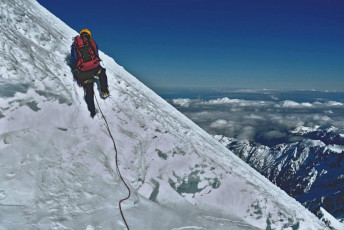
We pitched up through the summit rocks, then short roped across the summit snow field and on to the rime covered summit ice cap, which reminded me of more familiar North Island mountain terrain.
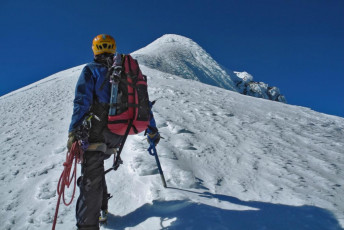
It was getting hotter out of the shelter of cliffs, but a stiff wind kept me focused.
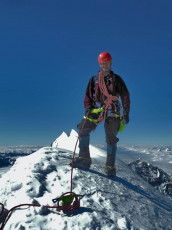
Then there wasn’t any further to climb. We topped out on the near flat summit ridge. It had taken eight hours and I felt good; a little short of breath on account of the altitude, but still with plenty of fuel in the tank for the descent.
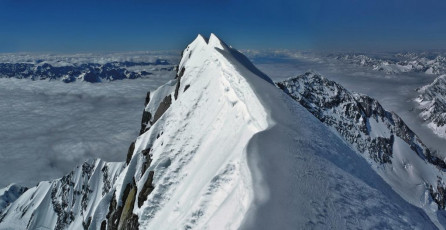
Gary had already been this way more than twenty times. While I wanted to linger for a while, savouring the moment, he only allowed a fifteen minute pause before we began our descent. Just enough time to take some hurried photos and register that the summit ridge looked intriguing, then we were off.
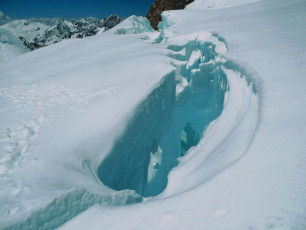
As a guide, Gary took his job very seriously. His focus was on minimising risk, not maximising client satisfaction. Understandably so; his place of work has more lethal hazards than most. He was not about to risk my life, his life, or his livelihood by allowing anything within his control to go wrong.
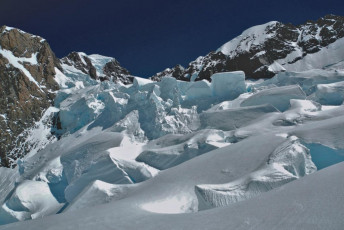
He knew that the sun was already weakening the bonds of thousands of tonnes of ice in the Gun Barrel, softening the snow on the steep slopes of the Linda Shelf and compromising the snow bridges over countless yawning crevasses on the Linda Glacier. The sooner we were past these the sooner we could relax.
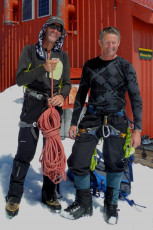
The short time on top wasn’t enough for me to fully take in that my decade long wait was over. That came six hours later, back safe at the hut. And a sweet feeling still wells up when I see the mountain. We were privileged to enjoy the entire route that day all to ourselves. Next day several climbing parties were on the mountain, so our timing had been perfect. On reflection though, the whole climb went by too fast. There is so much to absorb and appreciate; magnificent terrain, gigantic scale, spectacular beauty, ever present danger. One climb of the cloud piercer just didn't seem enough.









